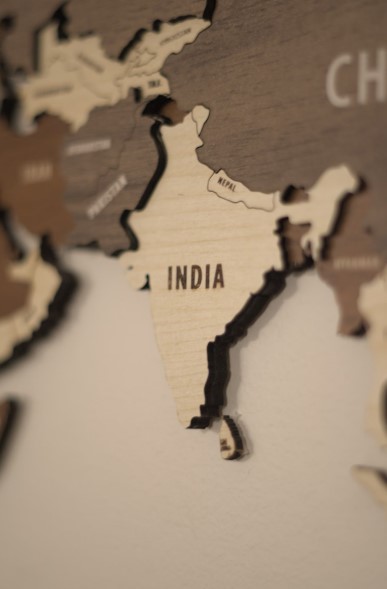For generations, the demographic narrative of our planet has been dominated by one giant: China. But the script has flipped. Sometime in the recent past – likely in 2023 or 2024 – India quietly, yet decisively, surpassed its northern neighbor to become the world’s most populous nation. While the exact moment may have been a statistical blur, the ramifications of this demographic milestone are anything but. This isn’t just a numbers game; it’s a profound reshaping of the global landscape, with significant and ongoing implications for the United States across the economic, political, and social spheres.
Think about it: a country teeming with over 1.4 billion people, a vast and increasingly youthful workforce, and a burgeoning consumer market. This isn’t a distant headline; it’s a seismic shift that will ripple through global trade, redefine geopolitical alliances, and even influence the very fabric of American society. So, grab your coffee, because we’re about to dive into why India’s ascendance to the population throne matters right here, right now, in the good old U.S. of A.
The Economic Earthquake: A New Global Marketplace Emerges
For American businesses, the rise of India as the world’s most populous nation presents both tantalizing opportunities and potential challenges. Imagine a marketplace with more than a billion potential customers, many of whom are young, aspirational, and increasingly connected. This isn’t just a marginal increase; it’s like adding another continent’s worth of consumers to the global economy.

Consider the implications for global trade. As India’s economy continues its upward trajectory, fueled by its massive workforce and growing middle class, the demand for goods and services will skyrocket. American companies, from tech giants to consumer goods manufacturers, stand to gain immensely by tapping into this burgeoning market. Think of the iPhones, the Hollywood movies, the agricultural machinery – the potential for American exports to find a home in India is staggering.
But it’s not a one-way street. India’s own manufacturing capabilities are also on the rise. A large and relatively cost-effective workforce positions India as a significant player in global supply chains. This could mean increased competition for American industries, particularly in sectors where labor costs are a major factor. The “Made in India” label is likely to become even more prominent, potentially challenging the dominance of “Made in China” and creating a new dynamic in international trade.
Furthermore, the sheer size of India’s workforce presents a compelling investment opportunity. American companies looking to diversify their production bases and tap into a skilled and increasingly English-speaking talent pool will find India an attractive destination. This influx of foreign investment will further fuel India’s economic growth, creating a virtuous cycle with global implications.
The US government will also need to adapt its economic policies to this new reality. Trade agreements, investment incentives, and diplomatic efforts will need to be carefully calibrated to foster mutually beneficial economic relationships with India. Ignoring this demographic and economic shift would be akin to ignoring a major tectonic plate shifting beneath our feet – the consequences could be significant.
The Geopolitical Chessboard: A New Power Dynamic in the Indo-Pacific
Beyond economics, India’s population boom has profound implications for the geopolitical landscape, particularly in the strategically vital Indo-Pacific region. A nation with over a billion people commands attention on the world stage. Its growing economy and burgeoning military capabilities position India as a key player in regional security and global power dynamics.
For the United States, which has increasingly focused on the Indo-Pacific as a counterweight to China’s growing influence, a strong and stable relationship with India is becoming ever more critical. India’s democratic values, its strategic location, and its shared concerns about regional stability make it a natural partner for the US.
The rise of India necessitates a recalibration of American diplomatic and strategic relationships in the region. This could involve closer military cooperation, joint efforts in counterterrorism and cybersecurity, and a unified approach to maintaining a rules-based international order. Think of joint naval exercises in the Indian Ocean, collaborative efforts in developing cutting-edge technologies, and a shared vision for a free and open Indo-Pacific.
However, navigating this relationship won’t be without its complexities. India has a long history of non-alignment and fiercely guards its strategic autonomy. The US will need to be sensitive to India’s independent foreign policy objectives while finding common ground on critical global issues.

The demographic dividend of India – a large and youthful population – also has implications for its global influence. A young and dynamic workforce can fuel innovation, drive economic growth, and project a sense of dynamism on the world stage. This contrasts with the aging populations in many other major powers, including China, potentially giving India a long-term strategic advantage.
The Social Tapestry: Shifting Immigration Patterns and American Identity
While the immediate impacts of India’s population surge are primarily economic and geopolitical, its long-term effects could also be felt within the United States itself, particularly in the realm of immigration.
The US has always been a nation built by immigrants, and the diversity of its population is a source of strength. As global population dynamics shift, so too will immigration patterns. A larger and more globally connected India could lead to an increase in Indian immigrants seeking opportunities in the US, further enriching the American social and cultural landscape.
Indian Americans have already made significant contributions to various fields in the US, from technology and medicine to business and academia. A growing Indian diaspora could further amplify these contributions and strengthen the ties between the two nations.
However, shifts in immigration patterns also bring their own set of challenges. The US will need to ensure its immigration policies are fair, efficient, and responsive to the changing global demographics. Infrastructure, social services, and educational institutions will need to adapt to accommodate the evolving needs of a more diverse population.
Furthermore, understanding the cultural nuances and societal values of a more populous and influential India will be crucial for fostering stronger diplomatic and economic ties. Cultural exchange programs, educational initiatives, and people-to-people connections will play an increasingly important role in bridging the gap between the two nations.
Navigating the New World Order: Challenges and Opportunities for America
India’s ascent to the top of the world’s population chart is not just a statistical footnote; it’s a watershed moment with far-reaching consequences. For the United States, this demographic shift presents a complex tapestry of opportunities and challenges.
Economically, the massive Indian market and workforce offer immense potential for American businesses, but also increased competition. Geopolitically, India’s growing influence necessitates a recalibration of US strategy in the Indo-Pacific, forging a strong partnership while respecting India’s autonomy. Socially, shifting immigration patterns could further diversify American society, requiring adaptation and understanding.

The key for the United States lies in proactive engagement and a nuanced understanding of this evolving global landscape. Ignoring the rise of India would be a strategic blunder. Instead, the US needs to foster strong economic ties, build a robust strategic partnership, and promote cultural understanding to navigate this new world order effectively.
This demographic shift is not a zero-sum game. The rise of India does not necessarily mean the decline of the United States. Rather, it presents an opportunity for a more multipolar world, where collaboration and mutual respect are paramount. By embracing the opportunities and addressing the challenges presented by India’s population milestone, the United States can ensure its continued relevance and prosperity in the 21st century and beyond. The tectonic plates have shifted; it’s time for America to adapt and thrive in this new reality.
